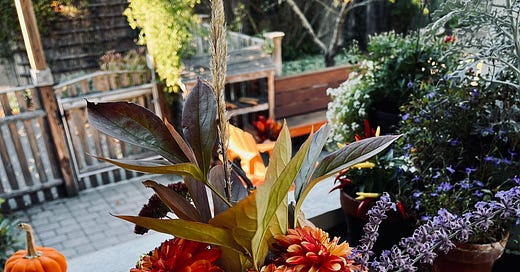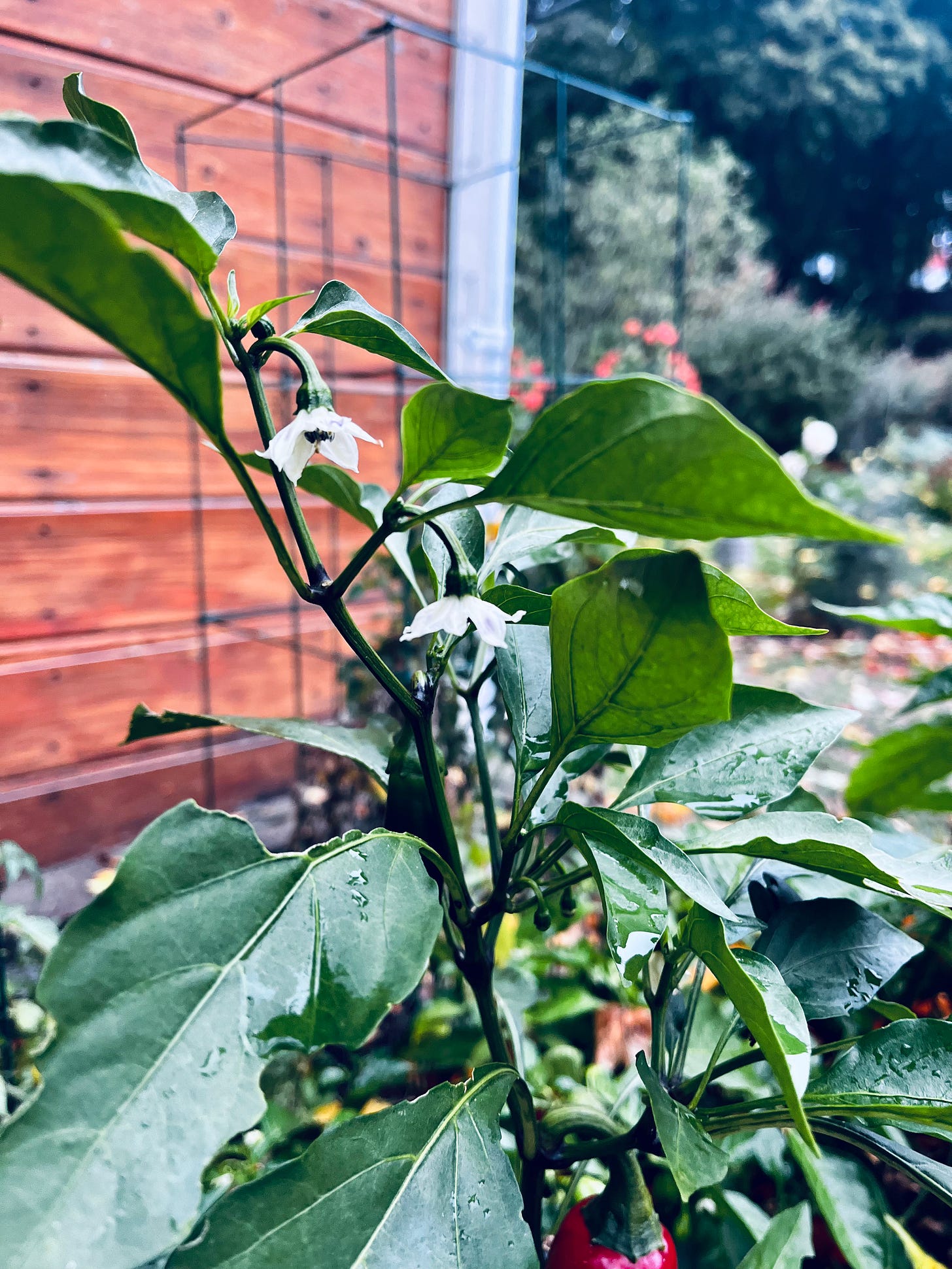It’s finally time to get rid of the grass. When we bought our house more than eight years ago, the back yard was nothing but a scrubby desolation of crabgrass, spurge, and bare patches of dirt. In the months that followed, we had landscapers install a lovely raised vegetable bed and a generous set of borders planted with everything from Goumi-Berry bushes to apples to pears. Since then, the care of the place has been an evolving joy, always demanding more of us and always piquing new forms of interest. The trees have grown, shading out the full-sun plantings like Black-Eyed Susans that thrived five years ago, but which must now be pulled up and replaced by woodland flowers that love the dappled shade like primroses, toad lilies, and dead nettles. I’ve heard it said that gardening is like interior decorating, except that all of the furniture grows steadily larger all the time. It’s a silly analogy, but it captures a truth: a garden is never in stasis. It always evolves. What worked before will not work next year, and that’s part of its improvisational joy, its paradoxical pleasure.
But even as my skill and vision as a gardener have evolved, there’s been one constant difficulty: the grass. Early on, the neighbor kids would literally mock its muddy patchwork from over the fence. Exasperated, I gave control to a lawn company for two years, turning a blind eye as they sprayed and bullied it into green submission. But after finding one too many dead things in the path of my mower, my conscience got the better of me, and I canceled the lawn company, relying instead on less toxic methods such as frequent applications of lime, good aeration, and gentle mowing. The results have been excellent—the green has remained, but the insects have also returned, a positive thing since they bring birds, dragonflies, and other pest regulators with them; a self-balancing ecosystem that is the symptom of real thriving as opposed to the artificial illusion of it.
It’s strange, then, that at this moment, when we’ve finally achieved a grassy equilibrium, we should arrive at the resolution to get rid of it. Perhaps unsurprisingly, flowers were the culprit—dahlias, specifically. A friend of mine gave me a bag full of tubers this spring. With nowhere left in the borders to put them, I hacked up a few wedges of grass, stirred in some compost, and planted them. The result has been a foamy splendor of orange, cream, and yellow flowers that we bring inside every day, filling pot after pot with the bouquets. We take them to work. We give them away. And once you’ve gotten used to dozens and dozens of fresh-cut flowers in your house all the time, the idea of grass starts to seem less appealing. Instead, you begin to ask yourself different sorts of questions, like “What if I didn’t have to wait until September to start potting up flowers?” and “Are other cut flowers this easy to grow?” and “What would our yard look like with a pond?” You know, all the logical lines of inquiry.
One sunny September day, as we stood on the back porch, my wife stared out at the grass between us and the dahlia patches and said “It’s good, but it’s incomplete. I need paths.” The transformation was complete: in our imaginations, the yard had ceased to be a yard and had begun to be a garden. And I began to plan. I have done garden design before—enough that I am no longer afraid to fail. In the end, plants aren’t puppies. They aren’t children. If you don’t like them, you can pull them up and throw them on the fire. The positive aspect of the ever-changing nature of gardening is that it can always be rearranged. It is a suggestive impermanence, a fluid, reciprocal self-expression, a grateful ongoing.
So I have resolved to be bold: we will triple our food-growing space, put down pea gravel hardscaping, expand the cut flower patches, and maybe even put in a small pond. It turns out that, once you give up the need to maintain a wide green sward behind your house, all that effort can be expended on other, and perhaps better, things. After all, if the kids want to kick a soccer ball, we can all walk down to the town green. But only here, in our little eighth of an acre, can we do whatever we want.
As we grow, Asheville is regrowing. If you’d like to donate to immediate relief in my hometown of Asheville, North Carolina, you find a link to the Anglican Relief and Development Fund by clicking the link below:






This is very exciting news son, can't wait to see the plan for your space. And, I would love some help in mapping out a garden space on our property. When can you get here? (with the whole family of course)
First of all, “Yaaaay!” I’m so excited for this newest venture and can’t wait to see it “flower!” Secondly, you know you’re living Dad’s dream right? He’s always wanted to create an English-ish garden but just never really had the time or expertise to
pursue it, third, I NEED PICTURES!!! You can’t just talk about this stuff and not show me ! Cruel and unusual and all that! Make haste son, your mother a waits!